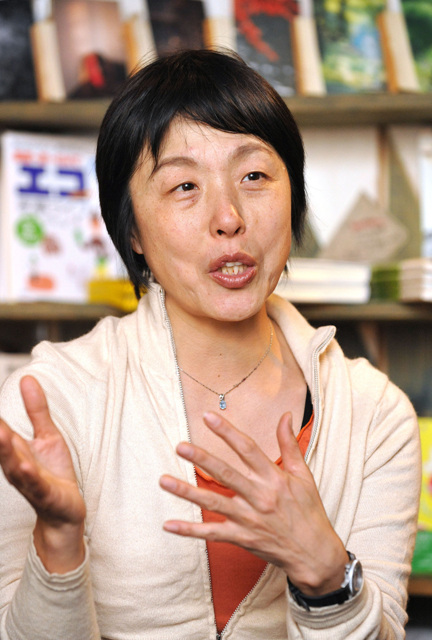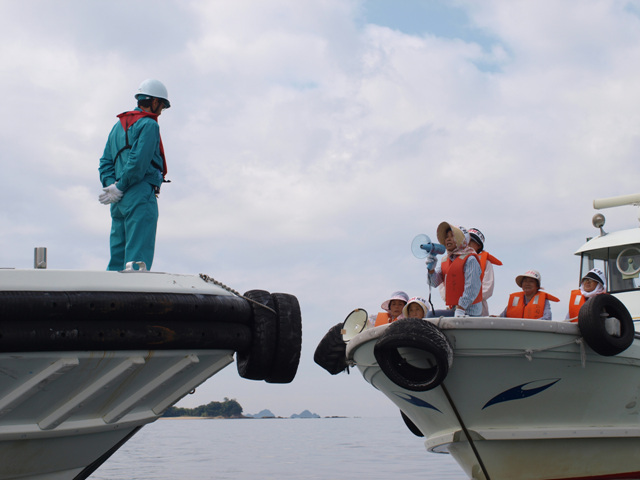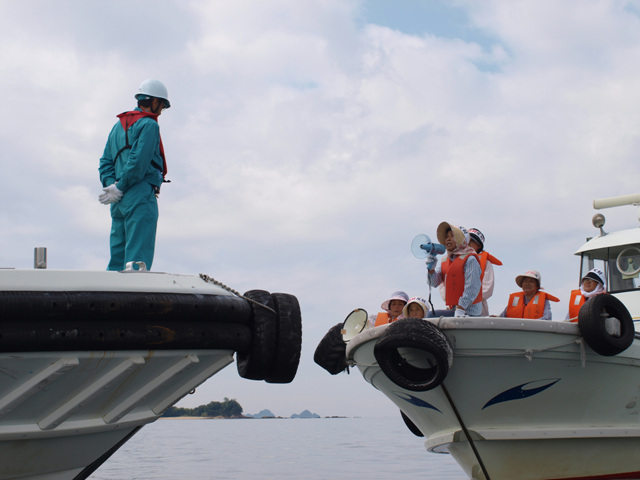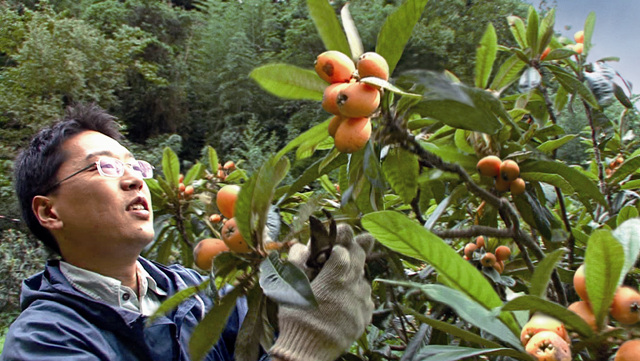14th(2012)
- Opening Film (1)
- New Currents (20)
- Asian Spectrum: Japanese Cinema 1955x20121 Eternal Breast (16)
- Polemics: Action! An Organizing Hope (6)
- Mexican Women’s Cinema: On/Off the Road (10)
- 동아시아 회고전: 여보스, 여장군, 여스파이 - B급 영화 속의 A급 여성들 (6)
- Queer Rainbow: From Nowhere to Everywhere (10)
- Open Cinema (4)
- Asian Short Film and Video Competition (17)
- Documentary Ock Rang Award (1)
- Multi-Culture Video Making: Slow Slow Quick Quick (22)
- A New Perspective on the Intimacy and the Relationship - Family and Community (8)
Ashes to Honey
KAMANAKA Hitomi
- Japan
- 2010
- 116min
- DV
- color
- Documentary
SYNOPSIS
Synopsis
For 28 years, the people of Iwai Island, living in the middle of the bountiful inland sea, have been opposing a plan to build a nuclear power plant. The island has a 1000-year history during which people have preserved their traditional festival. The people of the island set sail together to stop the construction of the nuclear power plant. A fight breaks out on the sea.
Program Note
After the March 11 earthquake and the catastrophic situation of the Fukushima nuclear plants in Japan last year the anti-nuclear sentiment is spreading throughout the world. Ashes to Honey seeks for an alternative green energy and shows the residents’ 28 years of struggle against the construction of a large scale nuclear plant in Japan. Iwai Island is known for its wonderful natural environment. Yet, as the Japanese government and an electric power company fill in a bay to make man-made land and start to construct a nuclear power plant, the residents begin their fight against the nuclear power plant development project. This film criticizes the logic of developmentalism hidden behind the nuclear power plant project and thinks about the direction in which to break the cycle of developmentalism and make alternative energy and ecological life possible. A woman director’s journey to look for an alternative sustainable energy and her gaze differentiates the film as a work by a female director. At the same time, the residents’ struggle led by women is also impressive.
Even after witnessing the disaster from only a few miles away, the Korean society is continuously expanding the project to construct nuclear power plants and nuclear exports. They are also crushing the rocks and destroying the marine ecosystem to build power plants, factories, and a military base. This film is sounding an alarm for the Korean society’s developmentalistic logics as well. (HONG So-in)
PROGRAM NOTE
Synopsis
For 28 years, the people of Iwai Island, living in the middle of the bountiful inland sea, have been opposing a plan to build a nuclear power plant. The island has a 1000-year history during which people have preserved their traditional festival. The people of the island set sail together to stop the construction of the nuclear power plant. A fight breaks out on the sea.
Program Note
After the March 11 earthquake and the catastrophic situation of the Fukushima nuclear plants in Japan last year the anti-nuclear sentiment is spreading throughout the world. Ashes to Honey seeks for an alternative green energy and shows the residents’ 28 years of struggle against the construction of a large scale nuclear plant in Japan. Iwai Island is known for its wonderful natural environment. Yet, as the Japanese government and an electric power company fill in a bay to make man-made land and start to construct a nuclear power plant, the residents begin their fight against the nuclear power plant development project. This film criticizes the logic of developmentalism hidden behind the nuclear power plant project and thinks about the direction in which to break the cycle of developmentalism and make alternative energy and ecological life possible. A woman director’s journey to look for an alternative sustainable energy and her gaze differentiates the film as a work by a female director. At the same time, the residents’ struggle led by women is also impressive.
Even after witnessing the disaster from only a few miles away, the Korean society is continuously expanding the project to construct nuclear power plants and nuclear exports. They are also crushing the rocks and destroying the marine ecosystem to build power plants, factories, and a military base. This film is sounding an alarm for the Korean society’s developmentalistic logics as well. (HONG So-in)
Director
-

KAMANAKA HitomiKAMANAKA Hitomi
In 1990, she shot her first film Uncle Suecha and with the fellowship from the Japanese Culture Agency, she studied at the National Film Board of Canada. She then worked as a media activist at the Paper Tiger in New York. After returning to Japan, she shot many documentary programs for television including At the End of the World (2003) and Rokkasho Rhapsody (2006).
Credit
- ProducerKOIZUMI Shukichi
- Cinematography IWATA Makiko , AKIBA Seikou
- Editor TSUJII Kiyoshi
- Music Shing02




